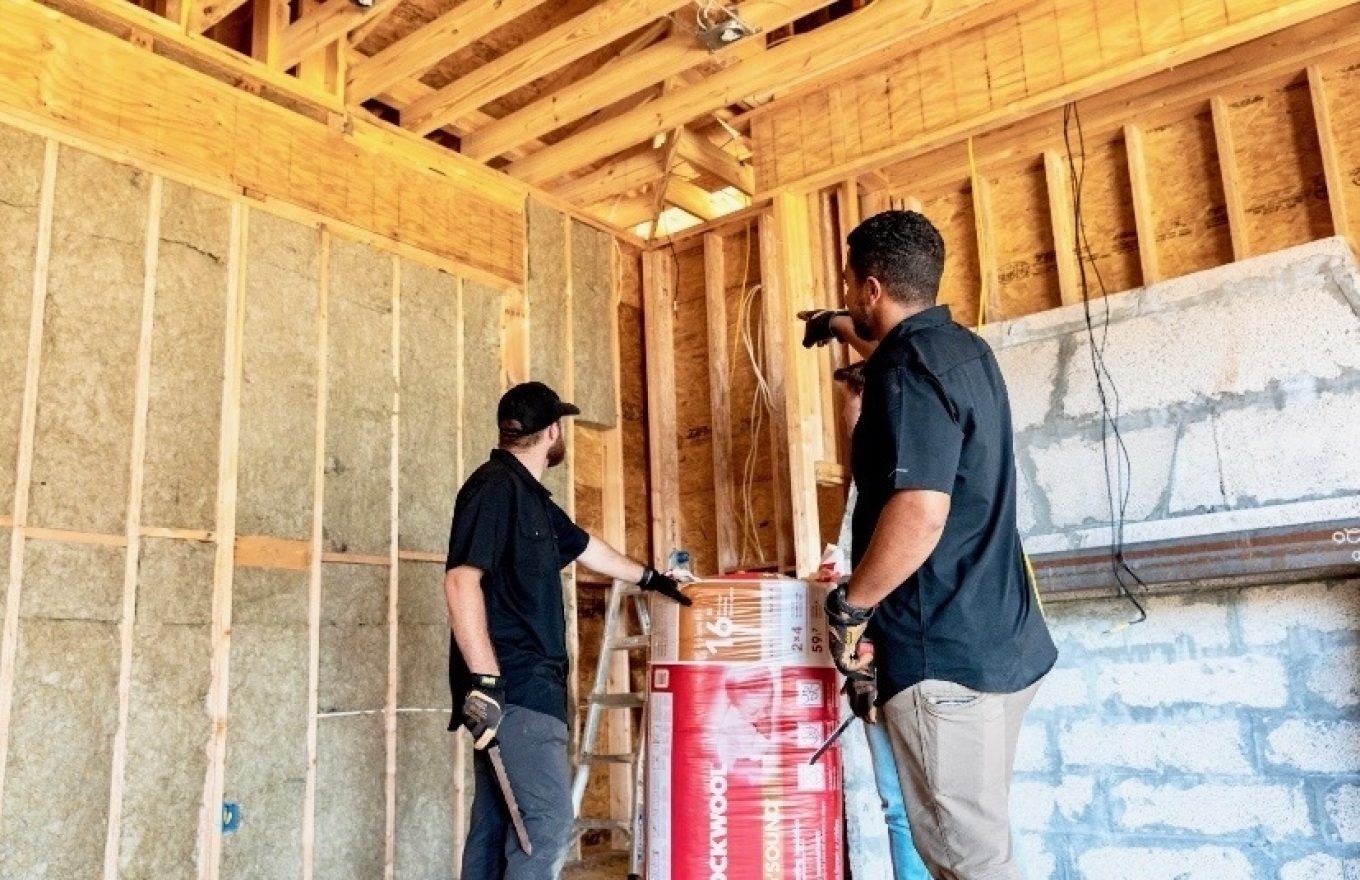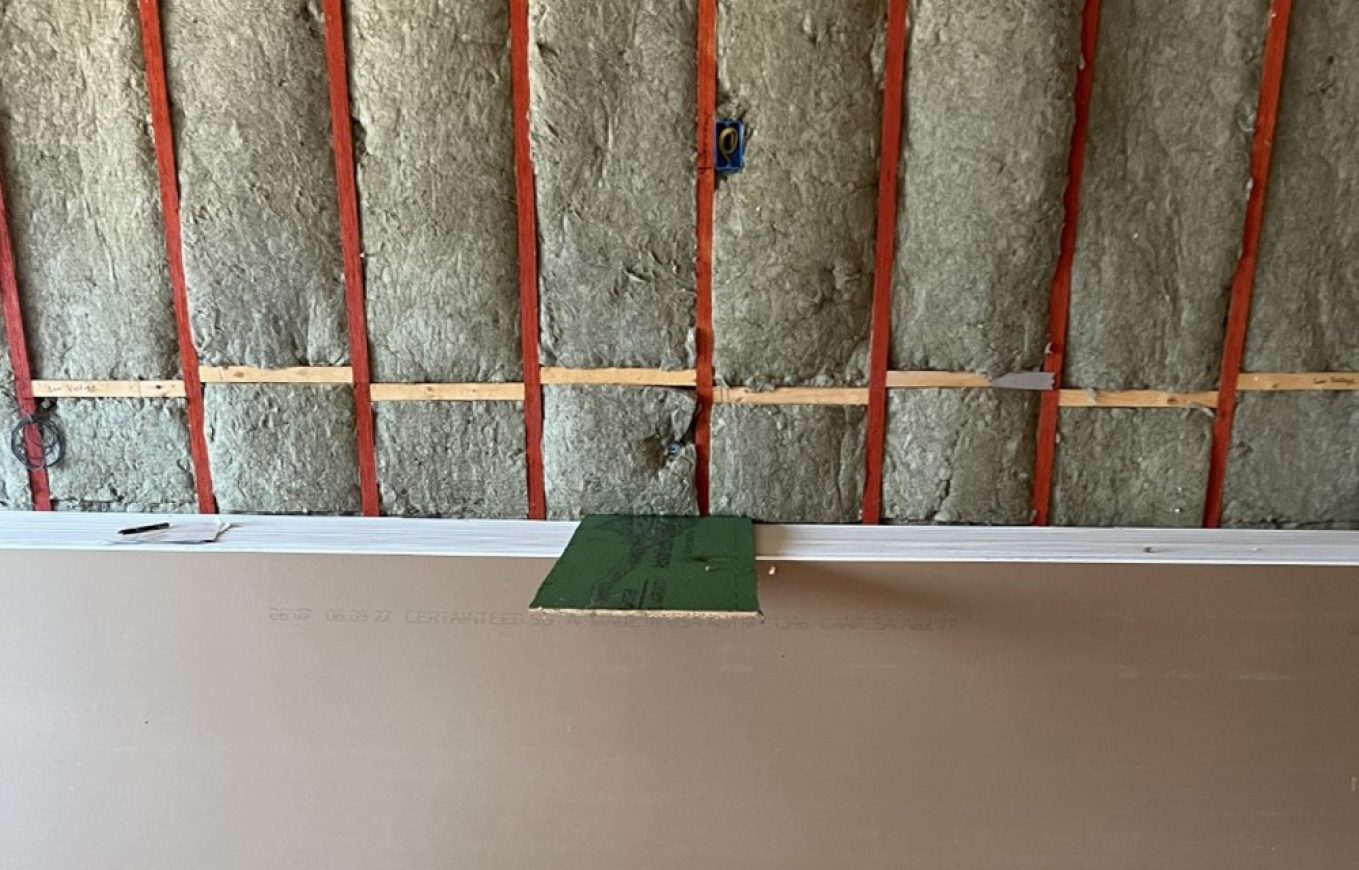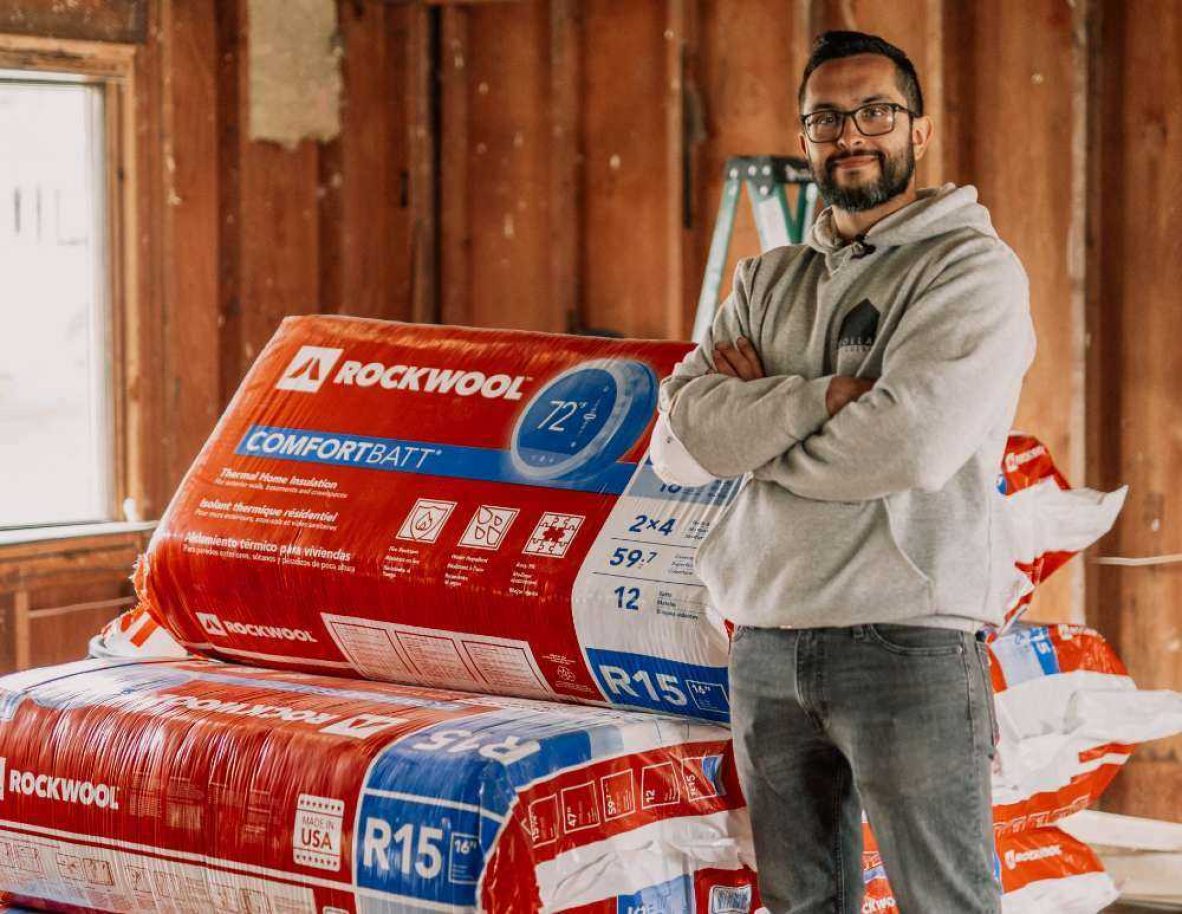Every builder has reasons for specifying stone wool insulation for their projects. Most will usually point to its exceptional thermal performance, durability or hydrophobic properties. Will King of High Cotton Homes in Alabama recognizes all of those features and benefits, particularly because they align with his building-science approach to constructing high-performance homes. But it’s the fire resilience of stone wool that really appeals to him.
Will was a firefighter for 10 years before starting his custom-build business. That experience gives him a unique perspective on the importance of selecting noncombustible construction materials.

This lakeside new build in Florence, Alabama, was the first time Will specified stone wool insulation. Will installed ROCKWOOL Comfortbatt® R-23 in the exterior wall stud cavities, as well as 3" of ROCKWOOL Safe'n'Sound® in the interior partition walls and 6" in between the floors and ceilings. The owners of the home have young kids, so creating a safe space designed for both work and play was a priority. They toured the home after Safe'n'Sound was installed and immediately noticed the difference in acoustics from room to room — particularly between the kids’ bunk room and the kitchen below it. According to research studies, improved acoustics contribute significantly to a higher indoor environmental quality, and that has all sorts of benefits for occupants.
“Comfortbatt plays a big part in creating a building envelope that truly provides comfort inside the home,” Will says. “The higher R-value and efficiency of ROCKWOOL Comfortbatt makes it easier to keep homes at a set temperature with lower power costs. In addition, stone wool insulation is a natural product that has fewer VOCs for a healthier home. On this home specifically, it’s located on a busy portion of the lake with a marina close by. The sound-dampening qualities of ROCKWOOL insulation will help to reduce noise in the home.”
Both ROCKWOOL Comfortbatt and Safe'n'Sound also add a substantial degree of passive fire protection in the home. Not all insulating materials can make that claim. Stone wool insulation is made from rocks and is therefore noncombustible. It naturally withstands temperatures of up to 2,150 F (1,177 C) without the need for any added chemical flame retardants. It limits the ability of fire to spread and, at the same time, does not contribute to smoke or harmful gases in the event of a fire. Improved home fire safety is a feature all homeowners can appreciate, whether they live in high-risk wildland–urban interface zones or not.

“This was my first time using stone wool, and I know it won’t be my last,” Will says. “We’ve already ordered ROCKWOOL Comfortboard® for underslab and exterior applications on an upcoming project. Stone wool is a great product that contributes in so many ways to the high-performance goals of this build. The passive fire protection is especially important to me — as a former firefighter, I know how critical it is to build in layers of protection that buy time for occupants to escape. The crew also appreciated how easy it was to install stone wool in both the exterior and the interior assemblies. The density and friction fit of the batts contribute to the durability of the assemblies — we know the envelope in this home will stand the test of time.”
Will also appreciates the valuable time he saves as a builder when using ROCKWOOL stone wool insulation. In a recent job, a client eliminated a window, and as a result, the area needed an insulation patch. For Will, it was quick and efficient to add more ROCKWOOL Comfortbatt instead of having to wait for a spray-foam contractor to return to the jobsite.
ROCKWOOL Comfortbatt is uniform in thickness and performance, making it a reliable product from a builder’s standpoint.– Will King
“The results of open-cell foam insulation are highly dependent on the quality of the technicians spraying it,” Will says. “ROCKWOOL Comfortbatt is uniform in thickness and performance, making it a reliable product from a builder’s standpoint. In contrast to spray foam, jobsites do not have to be closed down while it’s being installed, and other trades can continue to work.”
Joining the R‑Class™ was an easy decision for Will. “There are so many valuable resources available for builders like me who want to continually learn and bring increasingly better building practices to our work. For anyone who hasn’t ever used stone wool before, I say, don’t hesitate. ROCKWOOL’s technical team is always available to answer any questions that come up — from best practices on installation to solutions for unusual assemblies.”
First-time users like Will also qualify for a rebate on their first order in addition to the tiered rebate program available exclusively to R‑Class members.

A leak in the still-under-construction kitchen of Will’s project exposed the recently installed insulation batts to water. But because stone wool insulation is made from rocks and is hydrophobic, there was no need to replace the batts and no concern about mold or mildew growing.
The Build: Lakefront
- New construction
- High Cotton Homes
- Florence, Alabama: climate zone 3
- Approx. 5,000 ft2
Exterior Walls
- Areas where stone was on exterior, Dörken DELTA®-DRY & LATH was used for the drainage mat; other areas were covered in Keene Easy-Fur™ Rollable Furring Strips for Boral TruExterior Siding
- 7/16" ZIP System® sheathing with seams taped with ZIP System™ tape
- Penetrations sealed with liquid flash
- 2" × 6" studs 16" o.c.
- 5.5" ROCKWOOL Comfortbatt R-23
Interior Walls
- 3" ROCKWOOL Safe'n'Sound between a mix of 2" × 4" and 2" × 6" wood and LSL studs; plumbing walls 2" × 6" and other walls 2" × 4"; LSL studs were used in walls with cabinetry
- Gypsum board
Floors/Ceiling
- Hardwood flooring
- AdvanTech X-Factor® subflooring
- 6" ROCKWOOL Safe'n'Sound; open-web floor trusses were used between the basement and main level and were spaced 19.2"
- Gypsum board for the ceiling
Basement Foundation
- 10" concrete
- 2" × 4" wood stud walls; framed 16" o.c. on inside with a 1" air gap
- Closed-cell 2" foam on a concrete wall R-14 plus 3.5" ROCKWOOL Comfortbatt R-15 (flash and batt) for a total of R-29
Crawl Space Foundation
- 8" concrete poured slab
- Closed-cell foam on the interior of the foundation wall
